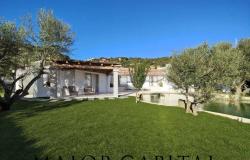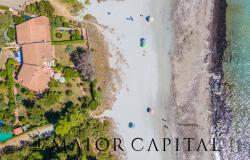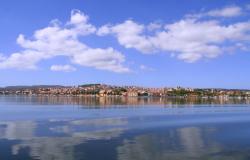Giuseppe Garibaldi, the Risorgimento hero who led several military expeditions fighting for the unification of Italy, spent the last 26 years of his adventurous life on the island of Caprera, in the archipelago of La Maddalena, off Sardinia’s northern coast.
The island, which Garibaldi eventually bought, represented his refuge and escape between one venture and the next.
Covered by pinewood trees, first planted by Garibaldi himself, Caprera has been declared a natural reserve for the species of birds living on the island: royal seagull, cormorant and peregrine falcon. The name seems to derive from the large number of wild goats – capre in Italian – living there.
Linked to La Maddalena, the major island of the archipelago, by a 600-meter-long causeway, Caprera attracts many visitors intrigued by an aspect in the life of Garibaldi few are aware of: his love for nature and farming.
The so-called Compendio Garibaldino, the housing complex where he resided, now a museum, is surrounded by the Mediterranean vegetation and granite rocks typical of the island of Caprera, and overlooks the crystal clear waters of the archipelago. It was in this idyllic place that Garibaldi started his farm and built the house where he lived with his family from 1856 to 1882, the year of his death.
He spent time working the land, cultivating orchards, vineyards and orange groves. He took personal care of the ‘orto’ and the garden, from which he obtained the products he needed for his and his family livelihood.
His home is a testament to his frugal way of living, to the simple pleasures he gained from living in close contact with nature. In such a beautiful and peaceful setting, he was able to ponder and plan the expeditions that would eventually lead to the birth of the Italian republic.
Caprera is the second largest island of the archipelago, but, unlike La Maddalena, it does not have a road system allowing easy access to the beaches, which are reached by way of dirt roads, trails or by sea. Some beaches not to miss include Spiaggia del Relitto, so called because the skeleton of an ancient vessel emerges from the shoreline; Due Mari; Cala Andreani; and Cala Coticcio, also known as Tahiti, rich in marine life thanks to the absolute ban on fishing.
Caprera island is a national monument.








